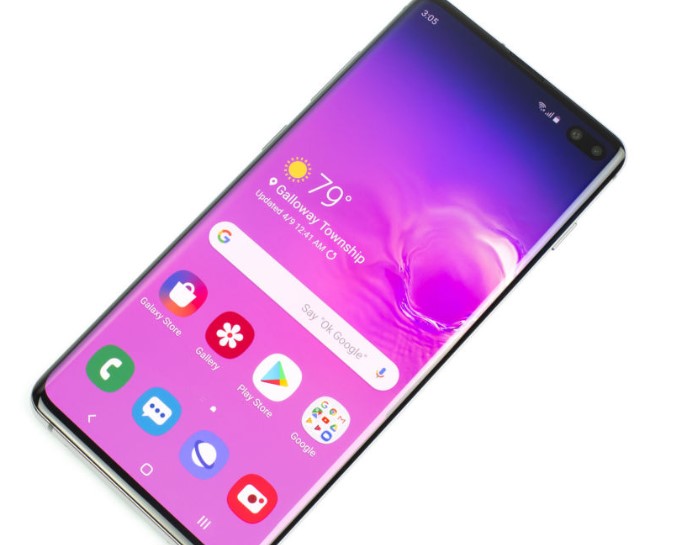Samsung is starting the slow and arduous process of updating its flagship smartphone to the latest version of Android: Android 10. This is just the beginning of the Android 10 rollout for Samsung, which, according to tracking from SamMobile, starts with Exynos-powered Galaxy S10s in European and Asian countries, including Germany, South Korea, the UK, India, Poland, and Spain.
Android 10 came out on September 3, and with the first devices landing the update on November 28, Samsung took 86 days to begin to roll out stable builds of Android 10 across its user base. Samsung still has a long way to go to release Android 10 to everyone with a Galaxy S10, though. Devices in Europe, Africa, and most of Asia ship with a Samsung Exynos SoC, while devices in North America, South America, and China ship with a Qualcomm Snapdragon SoC. So far, only the Exynos units have gotten the update.
If Samsung follows last year’s update timing, it will need another 40 days before its devices in the US get the update, which requires both a Qualcomm build of Samsung’s software along with approval and “validation” meddling from US carriers. Samsung’s direct “unlocked” customers get the worst end of the update stick and typically get the update last. In 2018, unlocked customers had to wait 55 days after the first rollout to get the update. For the record, Samsung’s roadmap lists “January” as the Android 10 update timeframe for the Galaxy S10, but that does not specify SoC or carrier concerns.
Samsung is actually improving compared to last year. The company took 141 days to first ship the 2018 Android update (Android 9 Pie) to its 2018 flagship, the Galaxy S9. Samsung taking three months to ship an OS update in 2019 might not sound impressive, but for Samsung, it’s a big improvement. With recent core OS changes like Project Treble, Google has been making Android easier to update, and it seems like these improvements are even helping Samsung along.
Samsung is still the worst major vendor when it comes to Android updates. Google offers day-one updates for the Pixel line, and others like OnePlus now follow close behind with updates that are just a few weeks late. Even if Samsung completes its Android 10 rollout in the next month—which would be a huge improvement—that’s still far behind the competition. The whole ecosystem is slowly improving, with Google even putting out a blog post that credits Project Treble with improving update speed. In July 2018, just before Android 9 Pie launched, only 8.9% of the devices were on the previous version, Android 8 Oreo. This year, when Android 10 launched, 22.6% of the ecosystem had made it to the previous version, Android 9 Pie.
Samsung likes to style itself as a competitor to Apple, but the company doesn’t even attempt to compete with Apple’s iPhone support package, which has day-one OS updates and a whopping five years of major OS updates. Samsung takes three to six months to ship an OS update and only does so for two years. Apple’s superior support means its phones have a much higher resale value than any Android device, including Samsung’s flagships.
Samsung can skin Android to add new user-level features and changes, but it typically does not (or cannot) add new system-level APIs, security improvements, or core system changes. For that, it needs Google and major Android updates, and this year Android 10 brings a new gesture navigation system, even more modularization and easier updates with Project Mainline, new notification-panel features like smart replies and focus mode, and new emojis. There are tons of privacy and security changes, like scoped storage, which limits what apps have access to your other app data, more fine-grained privacy controls, and further hardening of the media stack against malicious files.

